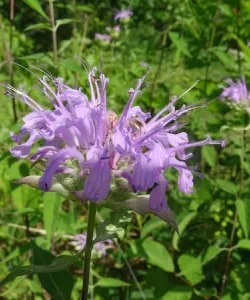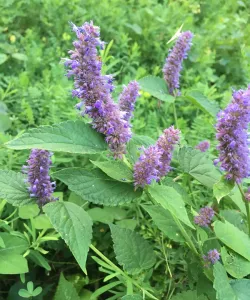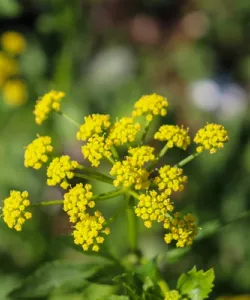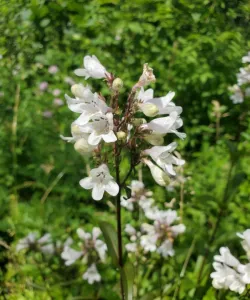The Ultimate Guide to Plants for Pollinators: How to Create a Thriving Native Garden for Bees, Butterflies, and Beyond


Pollinators are the unsung heroes of the plant world — responsible for the health of wild ecosystems, thriving food systems, and many of the flowers and fruits we love. If you want to make a meaningful ecological impact right in your own backyard, planting for pollinators is one of the most powerful things you can do.
This guide is your complete resource for selecting the best plants for pollinators, designing your garden for seasonal interest, and supporting biodiversity through the use of native plants. Whether you're working with a window box or a full yard, you'll find everything you need to build a thriving pollinator garden.
What Are Pollinators?

Pollinators are animals — mostly insects — that move pollen from one flower to another, enabling plants to reproduce. Without them, much of the world’s flowering plants and food crops would disappear.
Common pollinators include:
- Bees, including bumble bees, mason bees, and honey bees
- Butterflies, including monarch butterflies
- Moths
- Hummingbirds
- Beetles, flies, and even some beneficial wasps
Together, these species pollinate many plants that provide food, habitat, and visual beauty throughout the landscape.

Why Native Plants Are the Best Plants for Pollinators

When it comes to supporting pollinators, plants are key - butnot all plants are created equal. Native plants — those that evolved in your local ecosystem — are the best match for pollinators in your region.
Why?
- Their bloom time aligns with local growing seasons
- They offer the right nectar, pollen, and host plants for native pollinators
- They tend to be more resilient and lower maintenance than non-native ornamentals
Whether you’re planting native perennials like wild bergamot or annuals like helianthus annuus, native selections provide the greatest ecological benefit.

Building a Pollinator Garden: Key Principles

Creating a vibrant pollinator garden takes more than just scattering wildflower seed. Here are a few core principles to help you succeed:
1. Choose a Diversity of Bloom Times
Include early spring, late summer, and fall bloomers to ensure continuous food for pollinators.
2. Mix Plant Types
Combine perennials, annuals, and shrubs to provide variety in structure and flower shapes.
3. Select Native Plants
Visit native plant nurseries or local nurseries that specialize in regional species. You can also order native garden kits that are pre-designed for pollinator support.
Native Plants to Attract Pollinators

Ready to get planting? These native plants are favorites among bees, butterflies, hummingbirds, and beneficial insects.


Butterfly Milkweed (also often called simply Butterfly Weed) is one of the few North American native perennials with orange flowers. Its deep green leaves, short stature, and interesting seed pods lend interest throughout the season. As a milkweed, this is one of the only hosts for monarch butterflies and will give their caterpillars something on which to feed. Slow growing and late to emerge in the spring, Butterfly Milkweed is long-lived and drought tolerant once established. Butterfly Milkweed will not persist for many years in moist spots, however, as it is adapted to dry environments.
A vital host plant for monarch butterflies and a rich source of nectar for many pollinators.
🟡 Bloom: Summer | Color: Orange | Type: Perennial

Wild Bergamot thrills with its unusual purple-pink flowers that attract all manner of bees and butterflies. Grows best when cut in half in early summer, which reduces the final height. Wild Bergamot is prone to powdery mildew that turns the foliage whitish, especially on the lower portion of the plant, and causes lower leaves to drop off. It will not harm the plant but may be unsightly. Hide the tired foliage by tucking Wild Bergamot behind other tall plants. Wild Bergamot spreads by rhizomes (underground stems). To keep it in one place, use a shovel to slice around the plant and sever rhizomes in spring.
Loved by bumble bees, hummingbirds, and moths, this purple-flowered native is striking and fragrant.
🟣 Bloom: Summer–Fall | Color: Purple | Type: Perennial

Lavender hyssop has many standout traits that make it a great addition to any native garden. Incredibly long-blooming, its purple flowers bloom from mid-summer through fall. It's a top pollinator plant that attracts droves of native bees. The licorice-scented foliage is edible and deters deer. Lavender hyssop can handle drought once established and is well-behaved in the garden.
Tall, spiky, and incredibly attractive to bees. A standout in late summer gardens.
🟣 Bloom: Mid–Late Summer | Color: Blue-Purple | Type: Perennial

This versatile, low-growing spring bloomer forms a firework of yellow spheres, lighting up the garden. Golden Alexanders is attractive to many pollinators with its easily accessed nectar. If you're lucky, a black swallowtail butterfly will visit, leaving behind striped green caterpillars to feed on the leaves of your plant. Golden Alexanders are easy to grow in sun or shade, and it is tolerant of wet soils.
An early spring bloomer that supports parasitic wasps and other pollinators.
🟡 Bloom: Spring | Color: Yellow | Type: Perennial

The bright red pop-pom flowers of Scarlet Beebalm attract both hummingbirds and butterflies. This plant smells nice, too! A deer-resistant plant is in the mint family, Scarlet Beebalm's fragrant leaves are traditionally used in medicinal tea (hence its alternative common name, Oswego Tea). After blooming, Scarlet Beebalm can develop white spots on its leaves, but these are not a threat to the plant. Thinning the plant's stems can improve airflow and reduce the visual impact.
With bold pink, red, or purple flowers, bee balm is a magnet for nectar-hungry pollinators.
🟥 Bloom: Summer | Type: Perennial

Smooth Penstemon is the rare perennial flower with four season interest. The plant blooms early, and its white blossoms are often the only flowers blooming along with purple Spiderworts in prairies at the start of summer. In the fall, the plant turns a spectacular maroon, and the leaves at the base of the plant often remain red and green over winter. The upright seedpods change from red to brown over the season, and they hang on the plant through winter. Smooth Penstemon can develop a non-serious leaf spot disease some years. Tolerates clay as long as it's not too wet.
Early blooms and tubular flowers make this ideal for mason bees and hummingbirds.
🤍 Bloom: Late Spring–Early Summer | Color: White | Type: Perennial
Think Beyond the Blooms

Flowers are only part of the puzzle. To truly support pollinators, plants that support their full life cycle are just as important:
- Include host plants for caterpillars (like milkweed and golden alexanders)
- Leave some bare soil for ground-nesting native bees
- Avoid pesticides and insecticides, which can harm beneficial insects
- Offer clean water in shallow dishes or birdbaths
Planning Your Garden Layout

When designing your pollinator garden, think like a bee: what’s easy to find and rewarding to visit?
- Plant in clusters to create large patches of nectar
- Use a mix of flower shapes, heights, and colors: yellow, blue, pink, purple
- Ensure blooms from late winter through fall
Bonus: These tactics also make your garden more beautiful and cohesive.
Need help with any designs? My Home Park has you covered!

Where to Buy Native Plants for Pollinators

Skip the big-box stores — they often sell hybridized or pesticide-treated plants that offer little benefit to pollinators. Instead, seek out:
- Native plant nurseries that specialize in ecologically valuable stock
- Local nurseries that carry regional perennials
- Online retailers (like us!) that ship pre-designed kits, bulk plant trays, and seed mixes to your door
Buying in bulk, such as 32-pot trays, offers the best price per plant while giving you enough coverage for habitat creation.

The Role of Seeds in a Pollinator Garden

Once your garden is established, you can start collecting seeds to expand or share. Native plants grown from seed are:
- Adapted to your local climate
- Resistant to pests and disease
- Ideal for restoring disturbed areas
You can also direct-sow native annuals for a fresh flush of color each spring or fall.

Maintenance and Long-Term Care

The good news? Native pollinator plants require less maintenance than typical ornamental garden species. Here's what to do:
- Let flowering plants go to seed for wildlife and self-sowing
- Cut back in spring rather than fall to protect overwintering insects
- Water new plants during the first growing season, then reduce
Over time, your garden will become self-sustaining and more beautiful each year. If you want to maintain your planting with even greater care, My Home Park offers tips for every species we feature.
Why This Matters

Creating pollinator habitat isn’t just about beauty — it’s about rebuilding ecosystems, preserving food security, and restoring the natural web of life. Even a small patch of native plants can offer critical support for bees, butterflies, hummingbirds, and many pollinators.
When you plant with intention, you:
- Help pollinators thrive
- Promote diversity in your neighborhood
- Add bright, living color to your yard
- Inspire others to do the same
Ready to Get Started?
Planting for pollinators is easier than you think — and more rewarding than you can imagine. Get started with native plants today.
🛒 Shop Native for Pollinators
📍 Find Native Plants for Your Home State
Let’s create something beautiful — and vital — together.
Share this article


